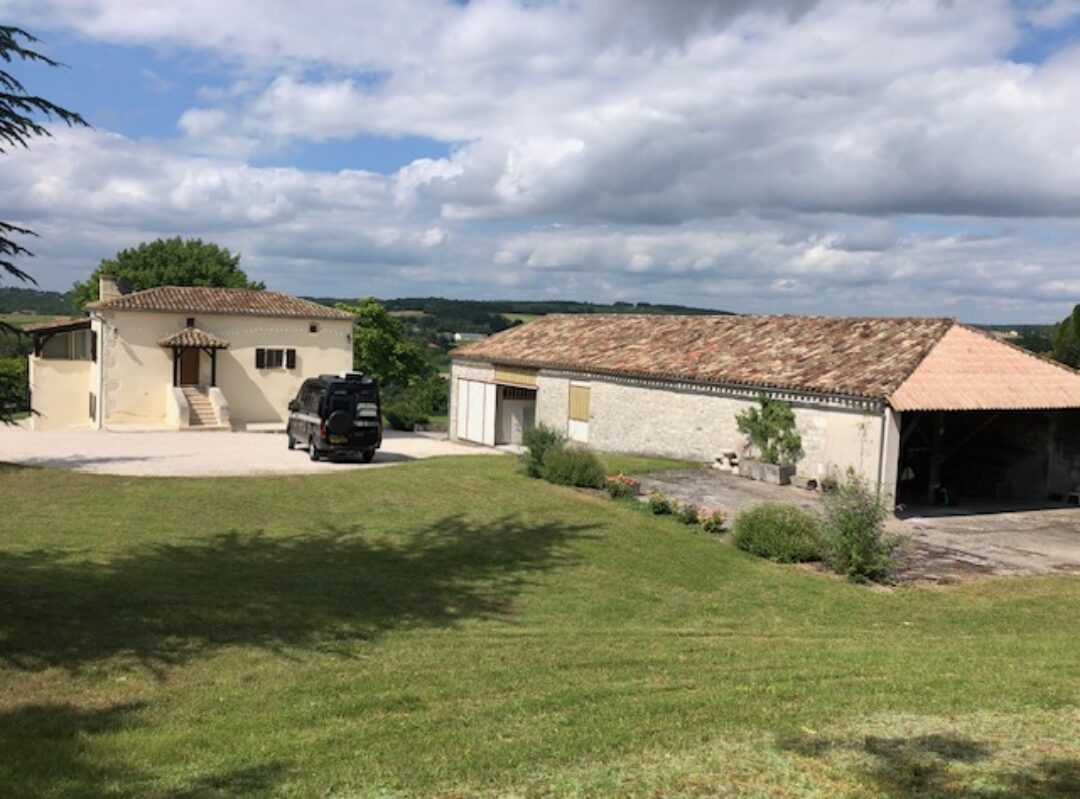With our aim of following the sun we continued west to the Bay of Biscay on the Atlantic coast and our next stop at Bidart, just south of Biarritz and in French Basque country. A complete change of scenery and architecture, much more built up and with the white and red half-timbered houses that are typical of the region. We were in the ocean section of our large campsite, with access directly onto the large sandy beaches and views along the bay to Saint Jean de Luz, the Spanish border and beyond. The beaches here are popular with surfers so, unusually in our trip so far at least, we were surrounded by ‘surfer dudes’ – young couples in campervans rather than motorhomes. Whilst we fitted in perfectly in our ‘rig’, we felt like a couple of old codgers compared to our neighbours! Joe had hoped he might be able to take his little boat out but, having seen the relentless rolling waves, he decided it would be a bit like Tom Hanks in ‘Castaway’ where his raft keeps getting pushed back to shore.
The centre of Bidart was just a short walk or bike ride from the camp and we headed there on a cloudless day, rather than to the much more built-up city of Biarritz. The origin of the name of the town is Bide Artean, meaning ‘at the crossroads’, and the town sits at the crossroads of roads from Biarritz, Bayonne, Saint Jean de Luz and ancient cliff paths.
Adjacent to the town square is a tennis type court with a high wall at one end, used for playing the traditional game of pelota, a racquet ball game played with a hard ball and a curved wicker racket strapped to the arm so it forms an extension of the hand.

For a longer day out we decided to do the coastal path walk from camp to Saint Jean de Luz and get the bus back – about a 10 mile walk. The path took us at various points along the cliffs, down across the beaches and back up again, and through villages, with some diversions where there has been coastal erosion. All the way we had beautiful views along the coast and to Spain, with the backdrop of the Pyrénées. We passed several simple cliff top chapels to mariners.


Dark clouds threatened in the distance for much of the way, despite it being very mild, but the rain kept its distance for the whole day. Saint Jean de Luz, just a few miles from the Spanish border, has a huge town beach of golden sand and a working fishing port. It was here in 1660 that Louis XIV married the infanta Maria Theresa of Spain. The centre of the town was very elegant, with a Spanish/ Basque feel to it and with shops displaying Basque products and specialities – the colour red dominates making it all vey cheerful. The Basque cross – a propeller shaped emblem formed by 4 ‘commas’ – also features as a motif on many items. We were able to have our first taste of ‘gâteau basque’, a pastry cake (or pie) filled either with black cherry jam or an almond crème pâtissière. We went for the cream version – a good choice. The bus ride back was surprisingly quick compared to our long walk, but welcome nonetheless.
This coastal area was very different to the rural France we’ve been travelling in. Everywhere seems well maintained and no doubt that’s reflected in property prices in a desirable area, and there’s more life everywhere. However it’s more built up and unless you’re right on the coast path you don’t get the views or sense of landscape we’ve been used to. But I’m sure we’ll explore more along this coast in the future.












Your description of the Bay of Biscay beaches takes me back to when I first saw the Atlantic Ocean in all its glory which is when I was staying with a penfriend in the mid sixties whose family had a holiday home at Hossegor. I couldn’t believe the force of the waves as the only ones I had experienced prior to that had been on the Norfolk coast which were mere ripples in comparison. I love your photos showing the beautiful scenery both coastal and inland. I suppose the “hey day” of the Basque movement is long past now but I wonder whether you’ve had to contend with their impossible language which at one time was used on signposts to the exclusion of french which made finding one’s way a tad difficult! Great to hear you’ll be at the Francophiles Christmas meal.
Bonne continuation.xx
I think the Basque influence is still very much alive and certainly all road signs were in French and Basque – so at least you stand a chance of understanding them! So many ‘x’s in the language, I wouldn’t have a clue how to start to pronounce the words. Certainly a lovely area for a holiday home.